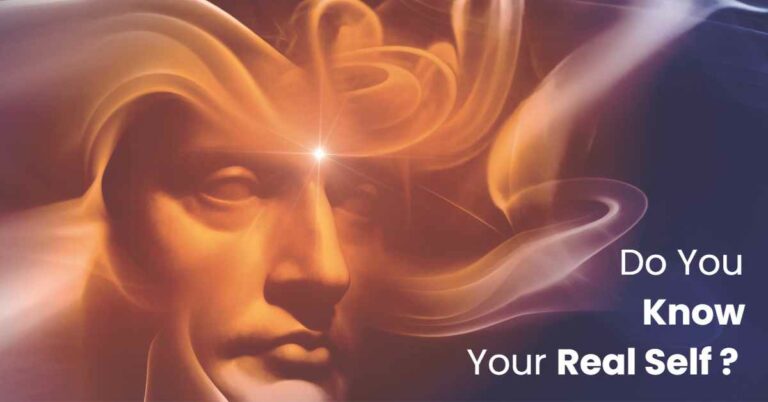
Do you know your real self ? A dissertation on the Self & Consciousness from the view-point of Science, Spirituality, Philosophy, Psychology, Yoga, Religions &
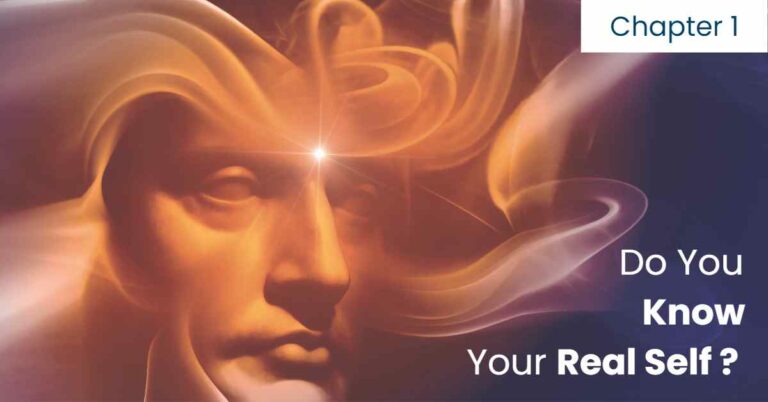
“Do you know your real self ? Are you aware of your real identity?” These questions were put to thousands of people across the world. In most cases, the answers given by them were substantially similar though there was difference in wording, mannerism and tone of the people who answered these questions. Some gave the name of their profession or designation, some spoke of their nationality and some others spoke of their religion and so on. A highly intellectual person, holding many degrees from a number of prestigious universities and Institutes of Technology was also asked this question. Following is the conversation that took place :
“Sir, may I ask you who you are. I hope that you won’t mind this question.”
“I am a Professor Emeritus in a university in California. My name is Mr…..”
“But, sir, what you have told is about your profession; you have also given the name of your body whereas I had asked who you are.”
“I’m sorry. Perhaps I did not understand your question. Even now it is not quite clear to me. What do you want to know?”
“Sir, as a conscient being, you had your existence even before you were appointed as a professor and even before your body was given this name…….”
“Yes; yes. So, what should be the answer ? I think that I should have said that I am an American — a citizen of America because that is where I was born, where I was given this name, where I got my education and where I teach even now.”
“You have told me of your nationality. ’ thank you for that. But, my question was : ‘Who you are?’”
“Oh, I see. Perhaps you want to know my Faith. I am a Christian.”
“This is your Faith or the religion of your belief. But I am not asking about ‘your’ but about ‘you’. You have said about your profession, the name of your body, your country and your religion. But my question was about ‘you’ and not about ‘your’. Even as there is a difference between ‘I’ and ‘my coat’ or ‘I’ and ‘my house’, so also is there difference between the self and the body.”
“Oh,I see what you mean. But I’m sorry. I don’t know, for sure, about the self as you say. I’ve told you what I knew and what I thought of me…”
The answers, as the one that is given above, show that most people had, never before, thought deeply on this question of the real identity of the self. Hardly did anyone know that the answer to this question determined their outlook, attitude, thought-pattern, behaviour and, finally, their state of mind and experience. Nor were most people aware that their answer to this question influenced their mood and had its effect on the atmosphere in their family and at their workplace and it influenced, more or less, all aspects of the society.
‘Who am I ?’ or ‘What am I ?’— is indeed a very old question but it is as relevant today as it was when it was first raised. This question was, perhaps, one of the earliest questions that gave rise to various systems of philosophical reflection, contemplation and metaphysics. Man wanted to solve the mystery of his own existence and worked to solve the riddle of his own real identity. He wanted to understand wherefrom he had come and why he was here, what would happen after death and what was there before his birth, where was he then, and what is his role and goal. Many systems of philosophy developed round these questions and many religions came into existence to answer these questions.
We will not go much far into various systems of philosophy Eastern and Western or Ancient and Modern — nor would we dwell on what each religion has said on this. We would confine only to what commonsense or layman’s logic and also Indian Philosophy, in essence, say on this. The layman’s logic or philosophical argument is based on one common observation.
All of us observe two kinds of entities or categories of existences in this world. One of these categories is of material things, made by man or created by Nature. For example, a bed, a bicycle, or an electric fan in a room are such material things or objects as have been made by man whereas the water in the river, the green forest, etc. are the works of Nature. The other category is of persons, not things. It is the category of ‘beings’ as we call them. In this latter category are those who are capable of thinking, experiencing and acting with a purpose. These are the subjects for whom the first category of objects, such as water, bed, bicycle and fan, exist. Water, bed and fan do not have any ability of experiencing and they do not exist for their own sake. They are for the use of the subject, the beings or the persons. The persons or the beings find the meanings in the existence of the things like water or bed. In fact, the very existence of a bed, a bicycle or a fan shows that there must exist here some persons or beings for whose use these things have been provided by Nature or made by man himself. Especially, the things like the room, the bed, the fan, etc. which are an assemblage of things for specific uses or purposes very strongly indicate the existence of a person for whose use they are there. Don’t we conclude the existence of a person there when we enter a room and see a moving fan and electric lights on and the bed ready for use even though we do not immediately see the person present there?
So also, layman’s logic, commonsense and the basic logic of Indian Philosophy assert that the human body, which is an assemblage of organs — eyes, ears, nose, mouth, etc., which are for specific use, exists not for its own sake but for the purpose of a user — a person who thinks, feels and acts, making use of it. The body is like a house, fitted with windows, doors, ventilators, sanitary conveniences, etc.; so, there must be an inmate in the body. The body is for the use of that inmate who uses or works with this mechanism.
Indian philosophy calls this inmate the Ãtman — the self. It is this one who uses the first person pronoun ‘I’, in singular form, for itself. This one is also called Purusha in some philosophical or religious texts because, if the body be compared to a Puri, i.e. a city, this person is the entrant, the in-dweller or the citizen. The very word ‘‘body’’ or ‘deha’ points to the separate identity of someone whose body or ‘deha’ it is. The self is called ‘dehi’. As the driver of a car is different from the body of the car so also theself, dehi, purusha, Ãtman or the soul has a separate identity. The body is material or physical whereas the soul is non-physical; it is metaphysical. We all know that car has the motor power whereas the driver has the motive power, the intent, the will, the purpose or the goal, for it is the driver who gives the car a direction according to his goal and uses it at his will with the intent or purpose of going somewhere. So also, the soul or the Ãtman, is different from the body. It is the soul which has intent, purpose, goal, will or motive and directs the body or decides when, how, where and why to use what part of it.
In some philosophical or spiritual texts, such as the Upanishads, the body has been compared to a chariot, the sense-organs to horses, the intellect to the reins and the soul to a charioteer. In Shrimad Bhagwad Gita, the famous scripture, also considered as one of the Upanishads, the body has been compared to the dress, and the Ãtman, the soul or the self has been compared to the person who wears it. The Gita, which is also considered as a high-class philosophical classic, says that, as a person gives up an old or worn-out dress and puts on a new one, even so does theÃtman give up the old and take a new body time and again. The Ãtman itself never dies; it only gives up the body — which is its dress — and the soul is never born also; it only takes a new body as one puts on a new dress. So, death, according to the Gita Philosophy, is merely the change of one’s dress and also address. The self is thus a traveller here, for it never stays at one place, in one body for ever. It is moving on a journey towards a goal though some have been lost in this journey and some have even forgotten the goal.
Layman’s logic points to the existence of two different entities — the soul and the body or the Ãtman and the deha in another way also. Consciously or unconsciously, willingly or unwillingly, we generally maintain the distinction between ‘I’ and ‘my’ ; we use ‘I’ for the ‘self’ and ‘my’ for things which ‘I’, as a person, use or possess. For example, everyone says; ‘This is my house’ or ‘this is my car’; no one ever says ‘I am a car’ or ‘I am a house.’ Similarly, everyone says: ‘This is my face, these are my ears or my eyes” no one ever says : ‘I am the eyes, the ears or the face.’ So, when someone says: ‘This is my body’, his statement implies that the one who says this is different from the body. This, therefore, points to the distinction between the self and the body or Ãtman and deha. The pronoun ‘I’ stands for the person, the subject, the being whereas ‘my’ stands for what belongs to, relates to or is possessed, owned or used by that person. The former is conscient and metaphysical whereas the latter is material in case it is the body or something that is used by the body.
Some people doubt the existence of the soul on the ground that it cannot be seen whereas the body and the brain can be seen. Such people believe in the existence of a thing only if they can see it. Little do they realise that if one always applied this reasoning, one will have to give up his belief in the existence of many things, for there are so many entities that are invisible to the naked eyes. Our eyes have a particular range of vision, and things can be seen by them if only they are within that range. For seeing things or objects beyond that range, we have to use telescope or microscope. Still there are many things which cannot be seen even with aided eyes. There are things, the existence of which is inferred by the influence or effect which they exert. For example, when an electric fan is working, we say that there is electric current there; we cannot see electricity but we infer its existence because we see that the fan is moving. When the fan begins to slow down and then stops, we infer that the light has gone, i.e., the electric current is no longer there. We do not see the current ‘going’ but we only infer its presence or absence by noticing the effect in either case. Similarly, by taking notice of certain signs, we infer soul’s presence in, or absence from, the body.
Some systems of Indian Philosophy, such as the Vaisheshika, have said that (1) Desire, (2) Experience of happiness and sorrow or pain and (3) Effort or meaningful and purposeful activity are the signs of the self or soul. These are not the characteristics of the material body but the conscient and metaphysical soul. When the self or the soul leaves the body, the latter lies like a log of wood. In fact, it is for making efforts or doing action by means of the body and for experiencing the result thereof in the form of happiness or pain that the body is given to the soul.
Indian Philosophy gives another argument, based on common logic and also on parallels from the administration of Law and Justice in the world. We observe that even the temporal or statutory law is based on the principle that only he, who has committed a crime, will be punished so that others be discouraged from violating the law. An innocent person must not be punished. Instead, he must be protected by the law. Moreover, the punishment accorded to a tried and proven criminal must be proportionate to the severity of the crime. These are the elementary principles of Justice and violation of these principles is ‘Injustice’. Now, keeping in mind these principles of natural justice, one would like to know why do some infants, from the very time of their birth, suffer from some acute physical disease or from some mental discomfiture or ailment. What crime, sin or wrong they have done at that tender age when even their sense-organs have not yet developed? They do not have even the capacity to commit a crime or a sin at least at the physical level. Is their suffering not some kind of a punishment? If not, then what is it? Is not the law of cause and effect operative in such cases at that time? In other words, what is the cause for their sufferings?
Sufferings appear in many forms. For example, some children are born to a family which is backward in every respect. Others have a good start because they are born to parents who have health, wealth, character, education and happiness. Does this happen without a cause?
Indian Philosophy says that, besides the State-laws, there is operative, in this world, another law, called the Law of Karma. According to Indian philosophy, every human action has a moral aspect. If a person’s certain act is morally good, the person gets ultimately benefited. If, on the other hand, his acts are morally bad, he suffers. It would require lot of space to express elaborately the Law of Karma and also what is morally good and what is bad but, in one sentence, it may be said that, if a person acts under the influence of hatred, anger, lies, prejudice, greed, ego, partiality, attraction for sexuality, then his actions are bad or negative. These create disharmony and conflict and sufferings in the society. On the other hand, if a person has a balanced judgment, stability of mind, peace of the spirit and also he acts with the feeling of love, justice, sympathy, humility and the like, then his acts are good because such acts promote harmony, peace, unity and happy feelings. Keeping this elementary distinction between good and bad in mind, and keeping also in view the foundation of the Law of Karma, enunciated in the well-known proverb; “As you sow, so shall you reap”, we may now think over the above-stated cases of the birth of children and answer the question whether the sufferings of those children, born with a disease, or born to backward parents, were without any cause, whatsoever?
If our answer is that there must have been some cause, then the question would arise about the time of the cause. Naturally, the cause of the suffering must lie in the time before the birth of these infants because the cause always precedes the effect. This then leads us to the conclusion that the person or the being who is before us in the form of an infant now must have committed some actions under the influence of negative factors that clouded his judgment and impelled him to do such actions as caused sufferings to others. Conclusively, therefore, this means that this person or being existed even before this birth. So, it must, by its very nature, be different from the body.
Extending the application of the Law of Karma to the future, it would be correct to say that the person or the conscient being which is in the form of the infant now, will also continue to exist when his body, having become dead, is burried or burnt because he will have to get reward or suffer punishment for his actions done in this life. His own existence must not end with this body else the Law of Karma would cease to be operative and this would suggest that a person can escape punishmeant for his bad acts if and when he dies.
Also, the Law of Cause and Effect operates in the form of an eternal series as the links of an endless chain. It does not stop suddenly at one end because, at every step, the effect works as a cause and gives rise to another effect and this series of cause effect – cause – effect… goes on. We may not be able to keep pace with it and continue to trace its track because of our own limitations but the forces of cause – effect – cause – effect… continue endlessly. So, the series of birth and death also remains unbroken because the series of Karmas continues. There may be a little pause between a cause and its effect and the effect may, at some stage, work as the cause for the first cause of the chain and may thus form a cycle but it cannot end finally and for ever. This Law of Cause and Effect and the Law of Karma and the principles of natural justice thus lead us to conclude that the ‘conscient being’ reincarnates and this series of reincarnations must be cyclic though it may have a pause for a period, and the pace of reincarnations many speed up or slow down, but it must not stop for ever and for ever. Even if we do not agree as to whether the series of reincarnations is cyclic or linear, one thing to which all the six systems of Indian Philosophy agree is that the ‘conscient being’ in the body does not have only one birth but, instead, it has a number of reincarnations. This means that the self, which is the conscient being in the body, does not die when the body dies nor is it born when the body is born but rather the truth is that it existed before the body and continues to exist after the dead body is disposed of. In other words, it is beginningless and endless in time, i.e., it is eternal and immortal. And, a logical conclusion of this is that the self or the soul is an entity that is different from the body.
All systems of Indian Philosophy also agree that the actions done by the self, the soul, the Ãtman or the Purusha leave behind them some tendencies, inclinations or personality – traits. These are called Samskãras. These remain there in the form or latent or dormant memories and work as matrix for future actions. These influence, at a sub – conscious or unconscious level, the thought-pattern, the outlook, the attitudes, the behaviour, the vision and the goal of every human being. These appear in the form of acquired virtues or vices and, thus, enlighten or vitiate a person’s total life- style, mannerism and ways. Some say that these Samskãras are embedded in the soul itself whereas others say that there is a causal body in which the soul is encased and the Samskãras are stored in that causal body which is very subtle and is invisible to our eyes-of-flesh. The Samskãras also goad and motivate for an action, or prevent and paralyse a soul from doing an action, though the current factors also have their own force of motivating or preventing. When a soul gives up a body, it takes the Sanskãras with it on its journey into the next body. The Samskãras,initially, determine the personality – traits and the state of happiness or sorrow of the ‘self’ in the new body. The Samskãras explain why there is the difference in the personality – traits and state-of-mind of two babies born to the same parents even as twins. The Samskãras also explain that the self existed before it came into this body and that it is an entity different from the body. The Samskãras also mark the distinction of one individual from the other and explain the vast diversity among human beings.
All the systems of Indian Philosophy declare with one voice that the soul, or all the souls, are peaceful and divine in their original nature and the present differences in their qualities, habits or nature, whether these are real or apparent, are due to the Samskãras acquired during their earthly life. They point out that if the souls are awakened from ignorance (Avidyã), enlightened by means of Divine knowledge of the self, then their divine potential can flower and they can break the shackles, formed by the Karma, and can get liberated from the vices or the Evils and the Samskãras formed by the Negativity and can, finally, have Release, Liberation, Salvation, Freedom, Redemption or Emancipation from the afflictions of Mãyã and from sorrows and sufferings.
Thus all the systems of Indian Philosophy assert that the identification of the metaphysical self with the material and mortal body is the root cause of all our negative tendencies, vices, bondages, sorrows and sufferings. They, therefore, emphasise with all the force of philosophical arguments that we must realise our original nature of Purity, Divinity and Peace and must return to it by the practice of stabilising our selves in our own real nature, for without that, there can be no liberation (Mukti) or Beatitude or Fruition (Jeevan – Mukti).
Even if the above philosophical theory is, by any logic, contradicted, it has, undeniably, the potential of building an un-ending reservoir of self-respect and an unshakable foundation for belief in the dignity of the human being whatever be his present (acquired) nature. And, self-respect is the quality or the value that gives a person a strong feeling of self-confidence and the ability to stabilise in a state of courage and to sustain one’s strength of character and will. Respect for others gives the basis to relate to others, maintaining dignity, royalty, grace, humility and acceptance of what others are and as they are. These, in turn, lead to trust, goodwill and co-operation and all these, finally, give Harmony to the society. So, this philosophical theory gives birth to social, economic, political, administrative and communication theories of great merits. These merits, in themselves, are not of little value and one finds that, without these, life loses its essence, meaning, message, ideal, goal, necessity, fulfilment and everything. This single belief in the separate identities of the soul and the body is not only a great morale-booster but the paradigm and the world-view based on it, change the whole outlook, attitude and behaviour – pattern of a person. Without this, not only does man get devalued, all other actions of man, including the values which we generally cherish and talk about, also get devalued. We stand or fall with this single belief in the self as a metaphysical being which is, originally, divine and is eternal and immortal and can rise to great height by the ladder of his Karma. This theory paves the path of morality for humankind. Remove this theory and the road to reality and royalty and moral norms or morality will cave in or will develop cracks and cavities.
If a person believes that nothing else but the body is the self and the two are not different, then he develops only materialistic outlook and bases his life-style on materialistic values. He gives utmost importance to material things, material attainments and to material goods and mundane objects. His goal is to achieve success in material pursuits by any means, whatsoever. He considers others also as objects to be used for his material welbeing. Spirituality and divinity have no place in his scheme of things. He is not prepared to make sacrifies for the good of others nor is he prepared to have any brotherly concern for the common good of all. Even if he talks of love, justice and sympathy, these are centered round the material aspect of these values. So, he becomes selfish, ultra-competitive and even aggressive in his ways because material survival, material security and all things that are of Matter become his main concern. He becomes greedy and wants to grab and accumulate even if others are deprived and are starved in this process. This gives to him an attitude of sex-lust also for he feels drawn towards the material body and its colours and contours. He considers persons of another gender or even the same gender as physical objects of sex-gratification. When he has accumulated material things, he develops pride and arrogance. He believes in the proverbial saying : “(Physical) Might is right.” If anyone stands in his way of fulfilling his ambitions for things of this material world, he becomes angry, feels hatred and enmity and gets prejudiced. Thus, all vices are born from this wrong belief in the self as the body. All litigation, all crimes, all kinds of violations of Law & order issue forth from this body-consciousness. All disharmony and social, economic and political conflict also are born from this. Bride-burning, woman-beating, child-abuse, divorce, fragmentation of the family or the society, in fact all troubles, tensions and traumas are the result of — body-consciousness.
As Electricity is known by various names, depending upon its different manifestations such as Light in an electric bulb, Power when moving a machine, Heat in a hotplate and Electro-magnetic force in elecronic devices, so also is consciousness known by different names according to its various manifestations. it is known as Mind when it manifests as thought, Intellect when it manifests as judgement, Memory when it retains, recalls or recollects the information, Emotion when it experiences sympathy, love justice etc. Samskãras when it manifests or rests in the form of different tendencies, and so on. These find expressions in various forms and all these have a moral dimension.
Some systems of philosophical thought consider Mind as the subtle body which is within our gross body that is made of flesh and bones. They consider Intellect as the body that is more subtle than even the mental sheath and they also believe in a ‘causal body’ which, they think, is the most subtle body. These three are encased one into the other and the soul is believed to be encased in the causal body. These bodies are considered to be made of subtle Matter. The truth, however is that the Ego, Intellect, Mind, etc., are not material in nature but the very Consciousness or the soul-energy becomes manifest as thoughts, memory, etc, as it comes into contact with the material body. The soul does have an aura which appears in the form of subtle body, having different brightness, depending upon the degree of its purity.
Some systems of Indian Philosophy consider the soul infinitesimal. They say that it is smaller than an atom. Some Upanishads have said that it is of the size of a thumb whereas others have said that there is a cosmic soul which is infinite. However, all agree that when it is in the body, the soul, as an individual or Jiva, is infinitesimal. It is a point-of-light which is spiritual in its nature and divine in its original potential and is different from the mundane light.
Philosophers and saints have written different interpretations and commentaries on the Upanishads, the Gita and the Vedanta. Shankaracharya, Ramanujacharya, Vallabhacharya, etc. are considered as great proponents of various kinds of Monism, and Madhavacharya of Dualism and Dayananda and many others have advocated plurality of souls and have said that the soul is atomic in size and is eternal and immortal and God and Matter are two other eternal entities besides the souls. Quoting from the same sources as Shankaracharya and Ramanujacharya, Dayananda has pointed out where the former have erred in their interpretations. If a person applies his mind to the arguments of various schools, given for and against each other’s system or interpretation and considers their arguments with impartiality, he would come to the system which Brahma Kumaris school enunciates. One would come to the conclusion that the soul, the self or the Ãtman is an infinitesimal point-of-Light that is eternal and immortal and has the original nature of purity and peace and that God is the Supreme among all souls and is the Parent Soul who is above birth and death and is Knowledgeful, Peaceful, Blissful, Loveful and Almighty and that Matter is inconscient and is the third entity.
However, the above-stated fundamental philosophical tenets of Brahmakumaris are not derived from anyone of the six philosophical systems or the Upanishads even though these are supported by these systems of Philosophy and the Upanishadas and particulary by Shrimad Bhagwad Gita. The Brahma Kumaris system does not depend for its legitimacy on anyone of the scriptures or philosophical treatises but its source is direct Divine Revelations even though its validity is confirmed by impartial reasoning and by Shrimad Bhagwad Gita and the system of Raj-Yoga.
Indian Philosophy has explained the great importance of Memory in the effort for rise in moral quality. It has said that man’s personality is greatly determined by his conscious memory. It has also pointed out that man’s state of mind is as the contents of his memory are. In so saying, it has made a great contribution in being selective to our learning, retention and recall in order that we may be able to lead a better life. It has also emphasised that man should not study obscene periodicals nor be an intimate friend of people who say or do bad things. It has laid great stress on the importance of Raj-Yoga, Dhyãn Yoga, Buddhi Yoga or Gyãn Yoga so that man focuses his conscious mind or purposeful attention on God and His qualities so that spiritual values may fill his soul. We will, therefore, discuss consciousness in the perspective of Raj-Yoga in a separate chapter which actually is the Paper-I, presented by the author at an International Conference on Science and Conscioussness, held in Athens, from January 3 to 7, 1993.

Do you know your real self ? A dissertation on the Self & Consciousness from the view-point of Science, Spirituality, Philosophy, Psychology, Yoga, Religions &
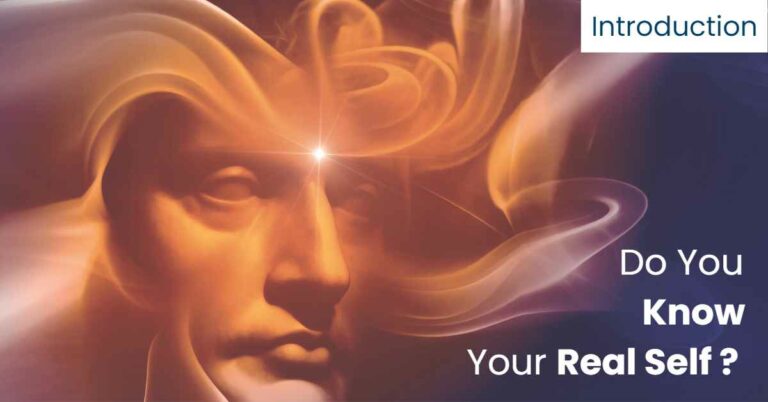
Knowing the Conscious and the Unconscious Consciousness is believed by all as the substratum of all human actions. Man’s thoughts, understanding, judgement, perceptions, learning, feelings,

Chapter 1 The nature and identity of the self in the light of Common Logic & Indian Philosophy “Do you know your real self ?
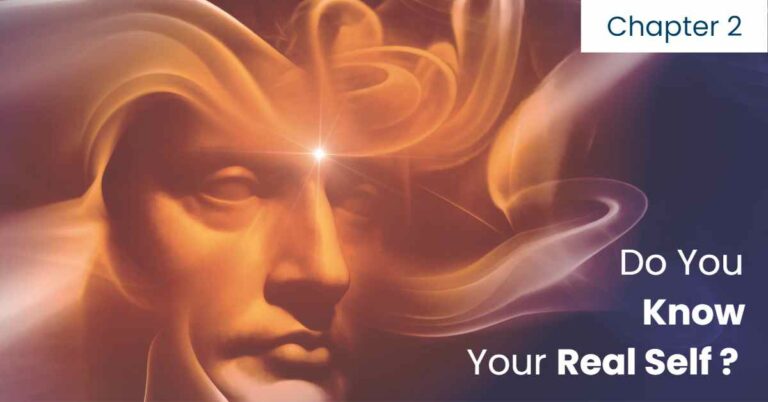
Chapter 2 Consciousness in the light of the views of some other philosophers Earlier, we have had a brief overview of some systems of Indian
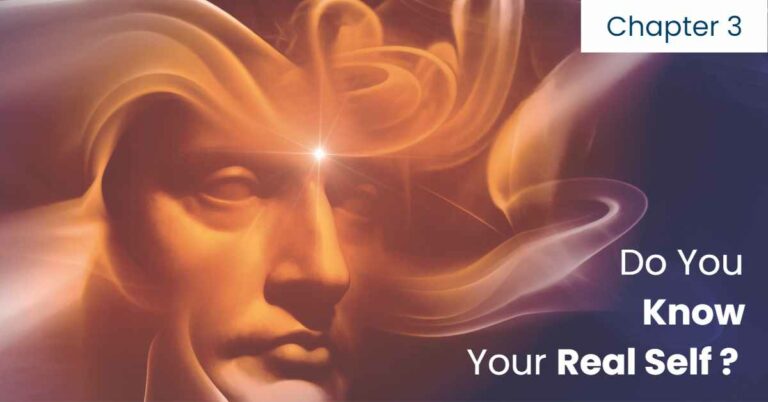
Chapter 3 Consciousness from the Spirituo-Scientific Perspective of Rajyoga In this paper, the term ‘Spiritual’ or ‘Spirituality’ does not refer to any particular religion nor
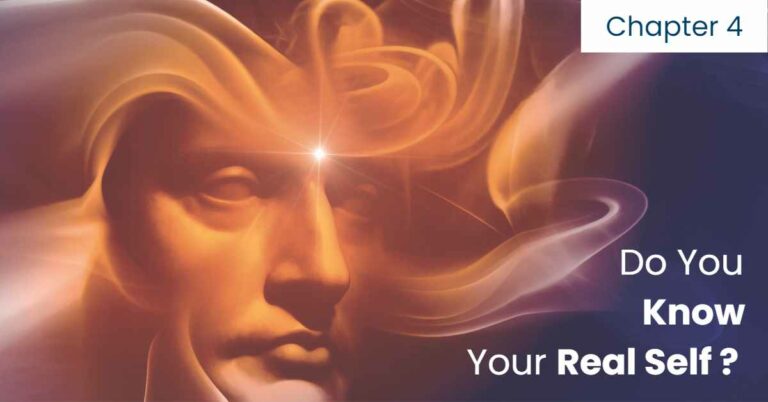
Chapter 4 Consciousness from a Religio-Spiritual Perspective (A part of author’s Paper-II, presented at the International Conference on Science and Consciousness) Before Science came on
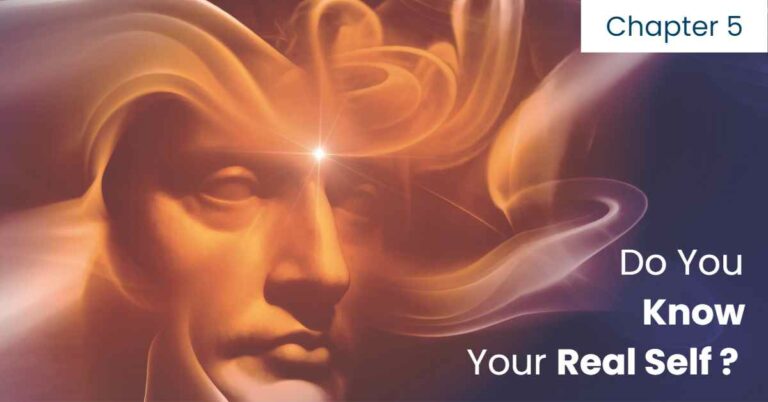
Chapter 5 Consciousness or Self From the Perspective of various Sciences and Spirituality If we think deeply on the nature of Thought, Emotions, Will, etc.,we
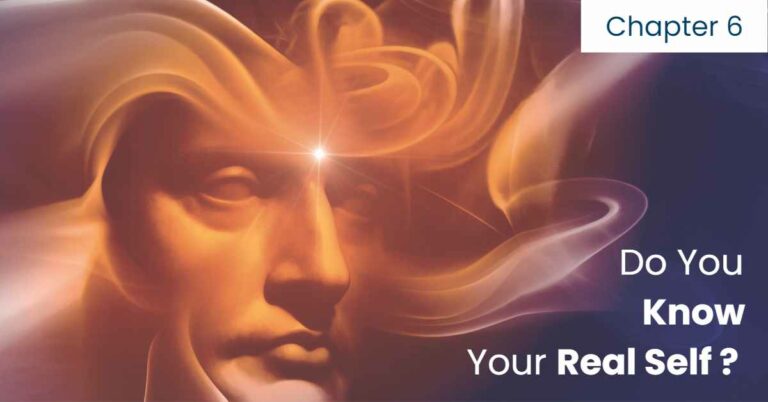
Chapter 6 Consciousness or Self and Some Systems of Psychology Earlier, in other chapters, we have discussed Conscious-ness with reference to Science, some systems of
Start your day with a breeze of positivity and stay motivated with these daily affirmations
After Clicking on Join, You will be redirected to Whatsapp Community to receive daily message. Your identitiy will be secured and no group member will know about another group member who have joined.